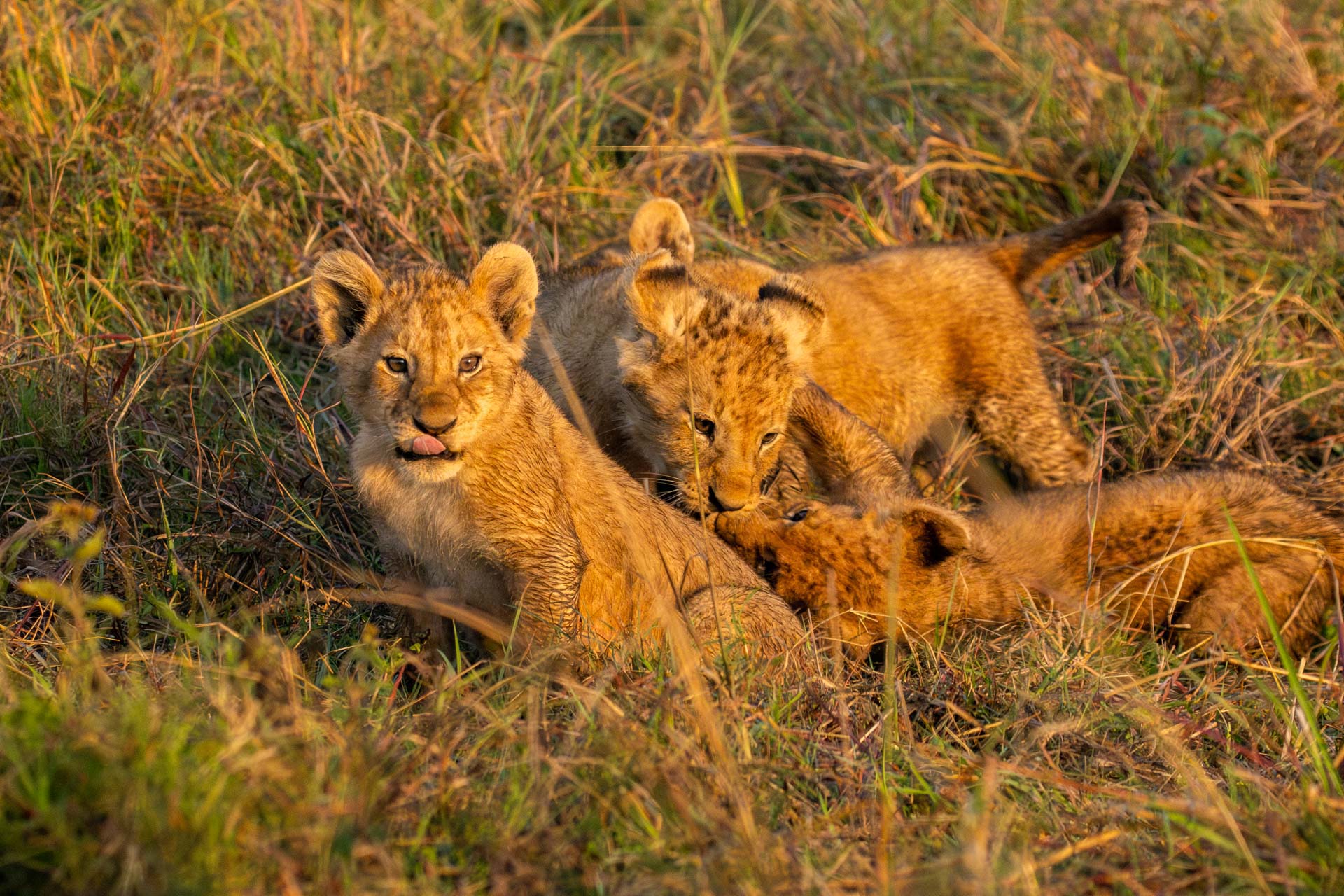
Amboseli National Park, spanning roughly 392 square kilometres (about 151 square miles), may be modest in size, but it boasts an array of breathtaking experiences that rival any African park. As a wildlife photographer and a landscape lover, I've found Amboseli to be an endless source of inspiration.
Imagine waking up to the majestic sight of Mount Kilimanjaro, its snow-capped peak piercing the sky, a perfect backdrop for the park's diverse wildlife and massive elephant herds. However, it's not just the animals that capture my attention; it's the dramatic landscapes that tell a story of their own.
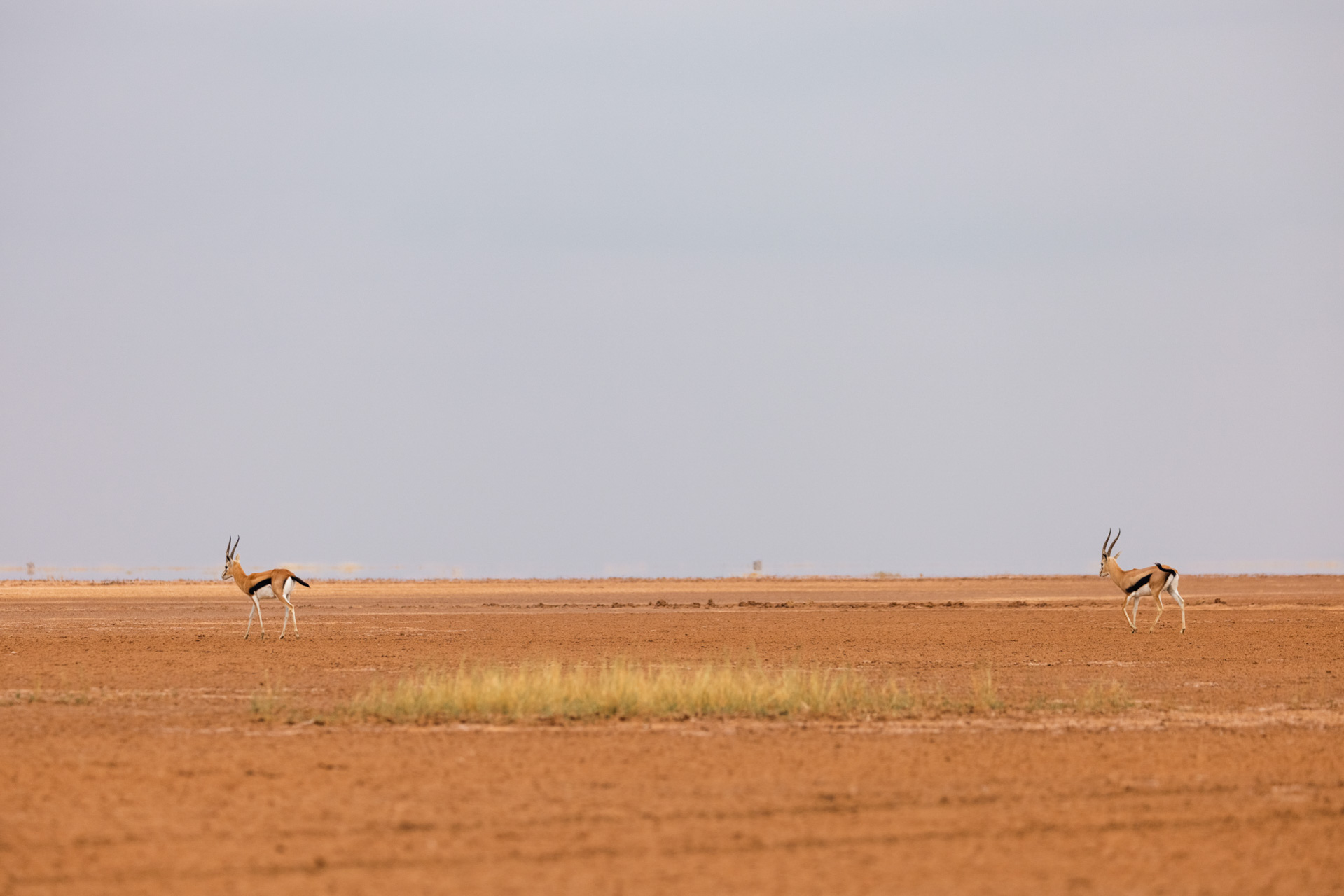
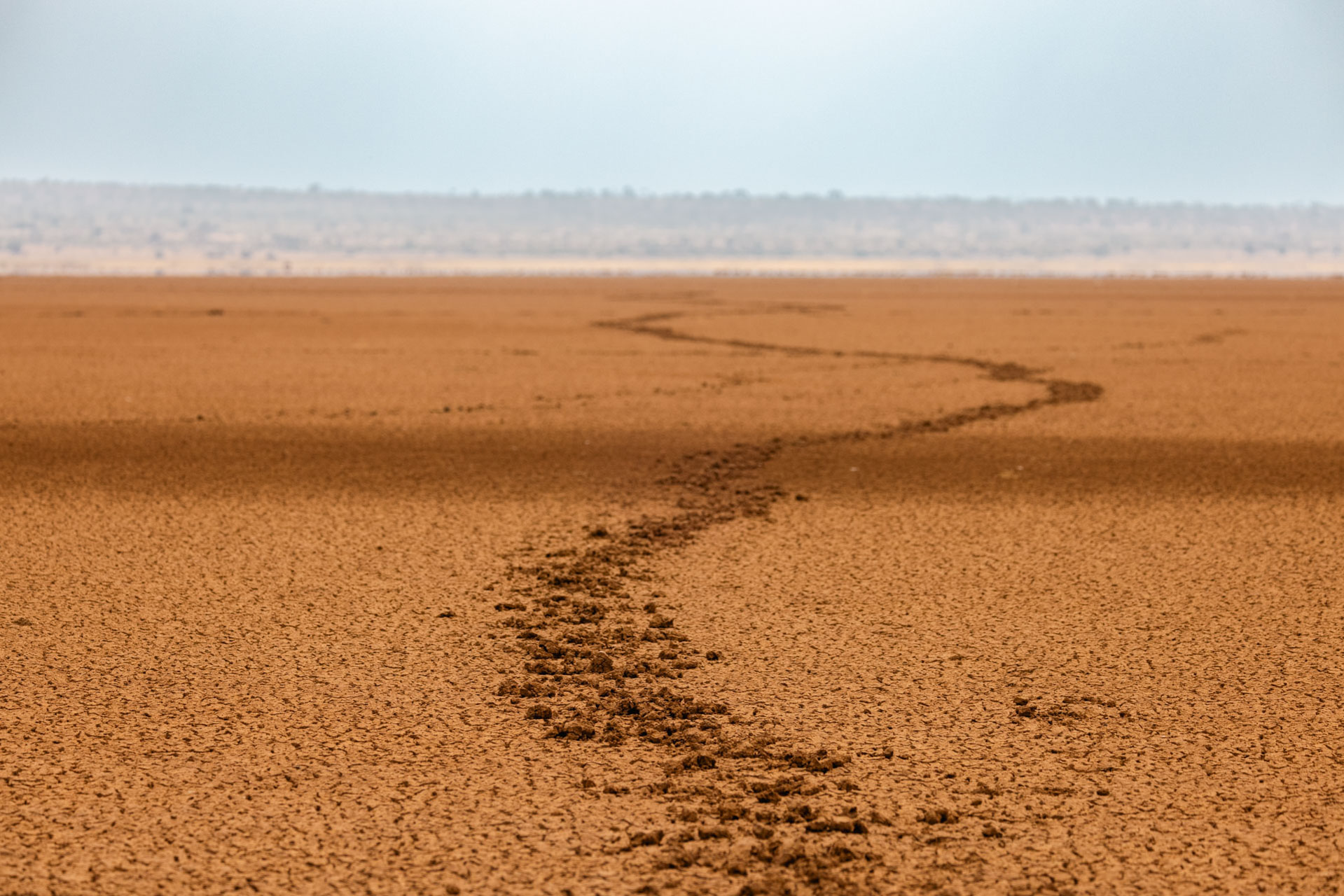
Lake Amboseli is a perfect example — this seasonal lake transforms with the weather, teeming with flamingoes during the wet season and morphing into a surreal, dusty lakebed in the dry season. Photographing this Martian-like landscape, with its cracked earth and eerie silence, feels like documenting another world.
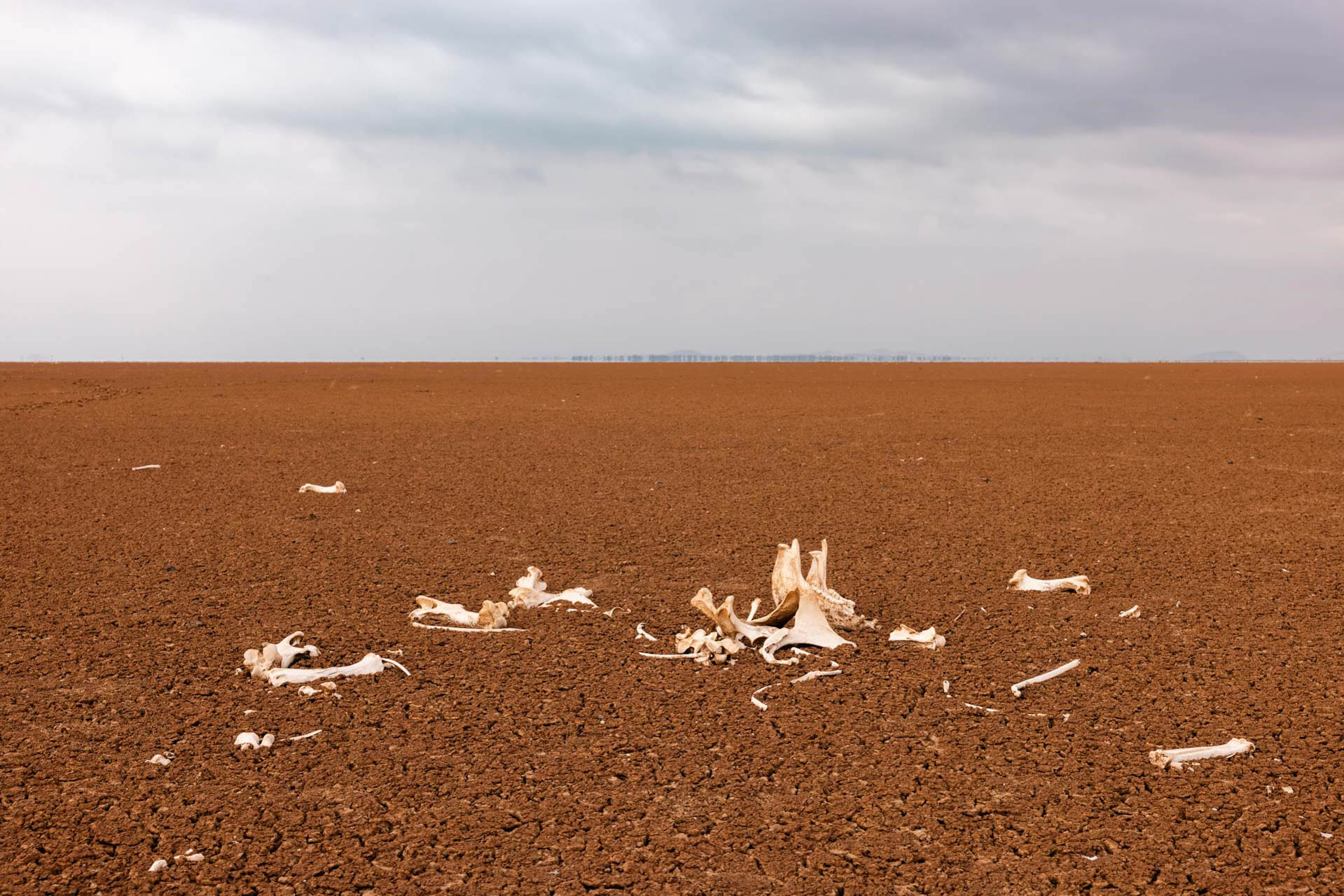
As the lakebed dries up, it becomes a challenging terrain for wildlife, a true test of survival. The journey across the vast expanse in search of water and pasture is perilous, and the scattered skeletons of animals are stark reminders of those who didn't make it. Capturing these moments on camera, I see not just the struggle but the resilience of life in Amboseli. Amboseli offers dramatic narratives from towering Kilimanjaro to the harsh beauty of the dry lakebed and lush marshlands in between. Experiencing these landscapes firsthand is a profound journey.
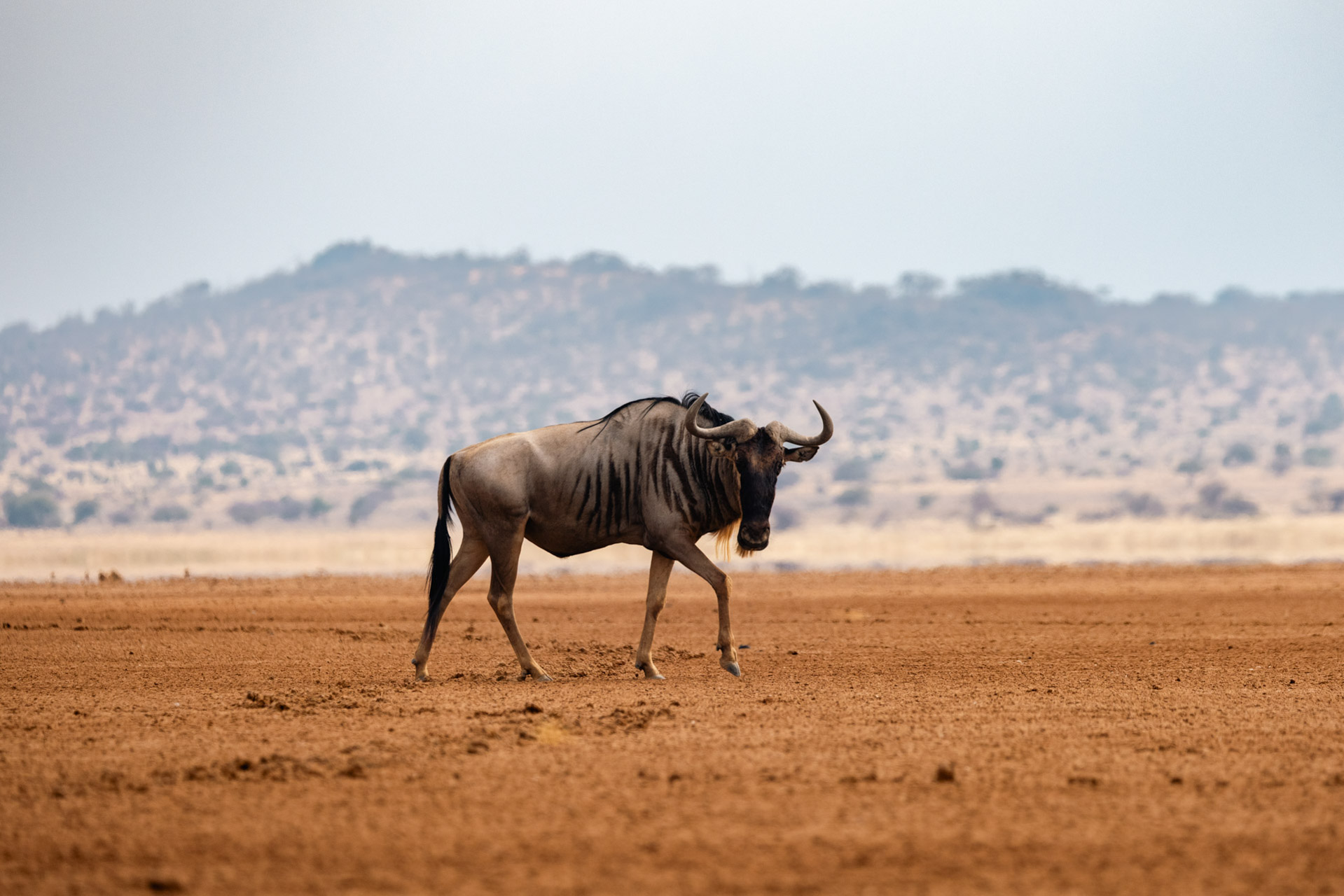
While observing male elephants mount each other can be baffling at first, it is a very normal social interaction behaviour in elephants. Male elephants, particularly young bulls, sometimes mount each other for various reasons, such as asserting dominance or playful bonding.
In elephant societies, hierarchy and dominance are important. Younger or lower-ranking males may mount others as a way of testing or establishing social status within a herd. Mounting behaviour can also allow young males to practise and prepare for future mating encounters with females, helping them learn the physical coordination required for successful mating.
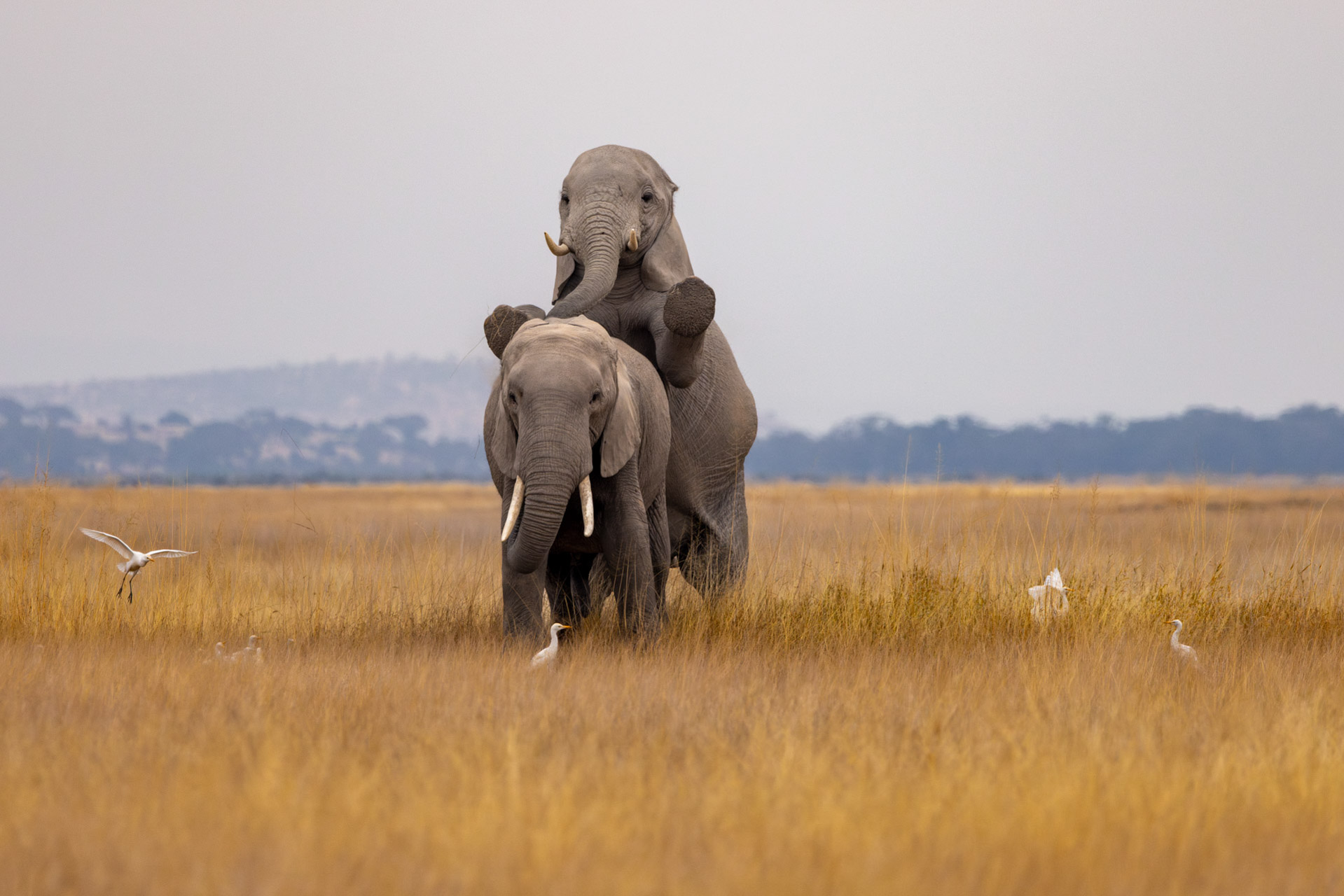
In this scenario, the mounting did not include any elements of aggression—such as tusk crashing or trumpeting and pushing each other—suggesting it was a typical play ritual. We observed them shortly after mounting, gently twining their trunks, indicating a non-aggressive and friendly interaction.
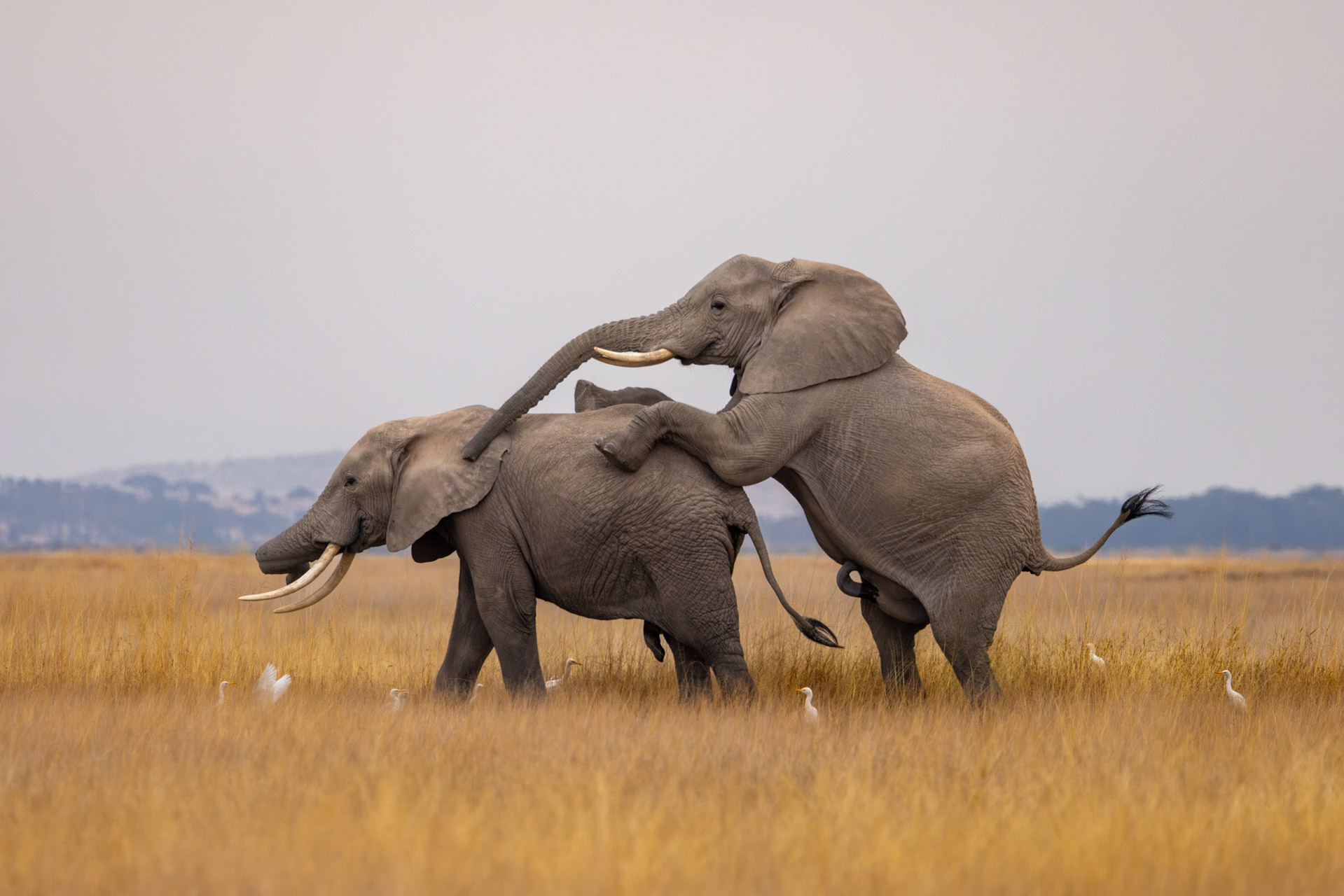
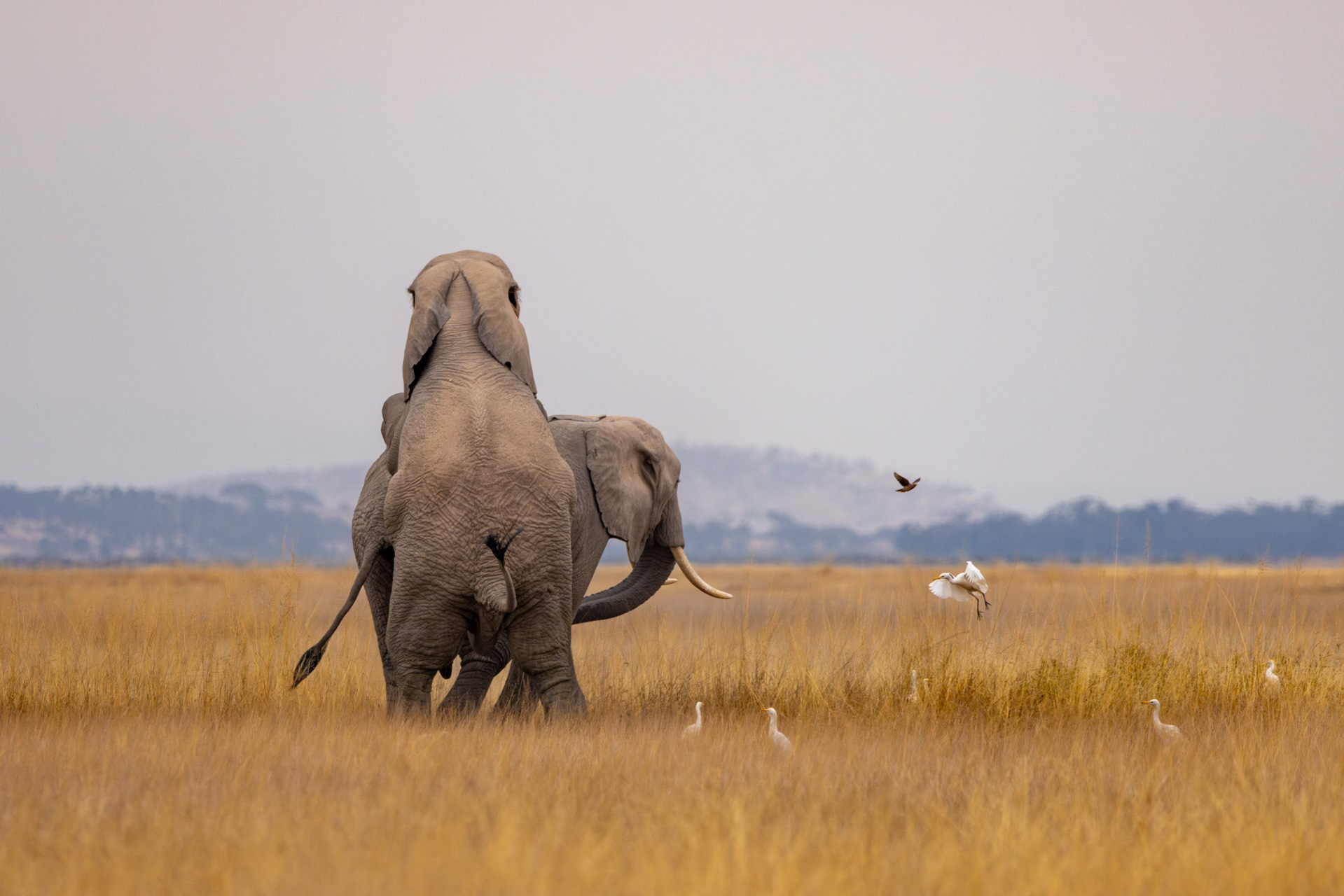
Cape buffalo bulls are some of the largest and most formidable herbivores on the African continent. We recently encountered two healthy adult bulls, each likely weighing over 1,000kg. These fierce, mean-looking animals are nicknamed 'Black Death' for their reputation for being dangerous, especially when threatened or wounded. Their unpredictable and aggressive nature makes them particularly feared.
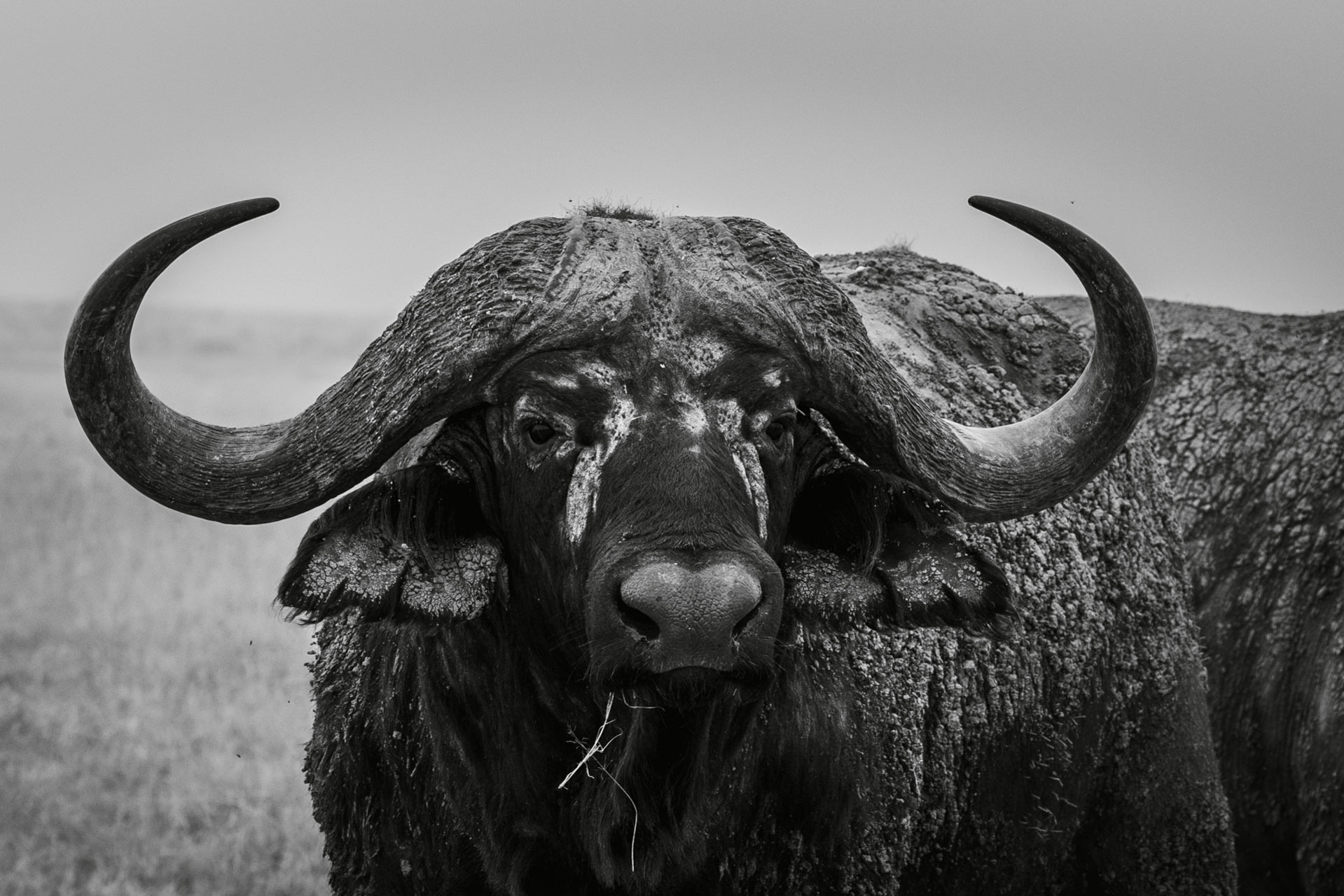
In the vast expanse of the Amboseli grassland, we spotted a tawny eagle perched on a barren tree. A closer look revealed its shaggier appearance, a clear sign of its old age. With time, older raptors like this eagle often have plumage that appears faded or bleached, particularly from prolonged exposure to sun and weather elements. This gives their feathers a worn, less smooth, and less vibrant look, adding to their rugged charm.
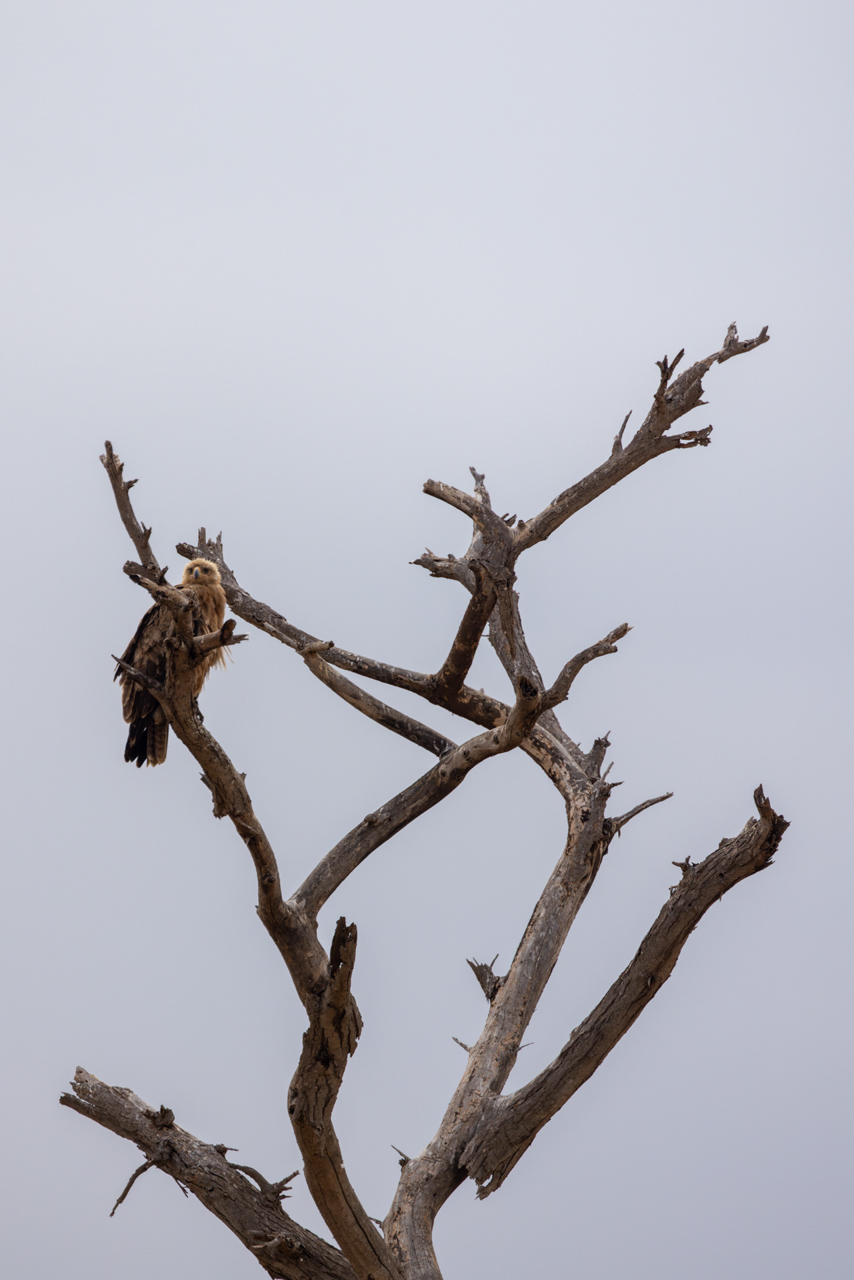
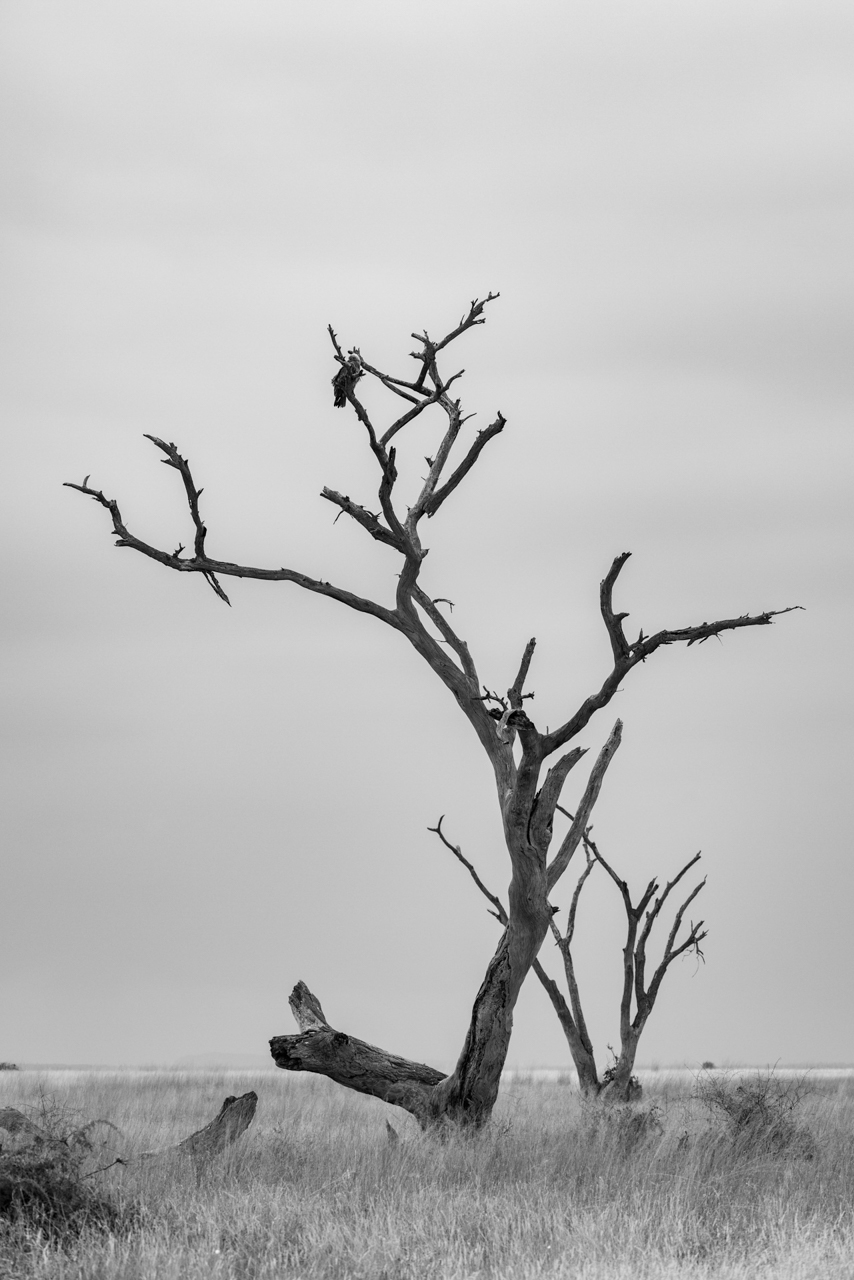
While discussing with the Angama Guiding team, I discovered the wisdom behind its choice of perch. Older eagles prefer this kind of solitary tree in the middle of the grassland as a perfect hunting strategy. By perch hunting, they conserve energy, patiently waiting from a high vantage point to spot potential prey. This technique is much more efficient than constant flying.
At this stage of life, these seasoned raptors also often rely more on carrion due to reduced agility and strength. They scavenge carcasses left by other predators or find animals that have died naturally. This survival strategy also highlights their adaptability and resilience as they age.
Back in Kimana Sanctuary, it’s been a feast, and warthogs have not been particularly fortunate to be on the receiving end, but such is the cycle of nature. After the lions made a warthog kill and had their share, vultures swooped in to clean up the leftovers.
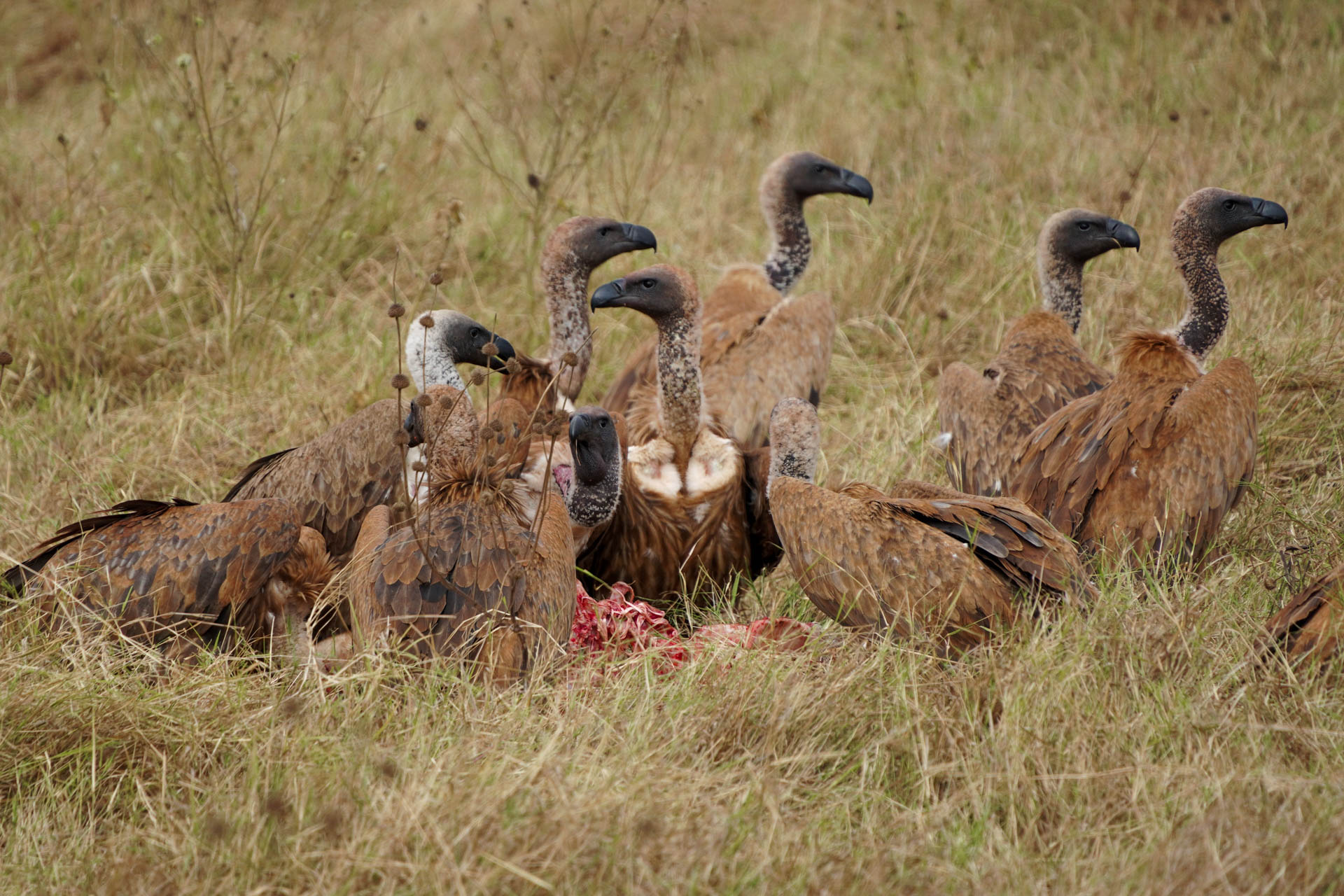
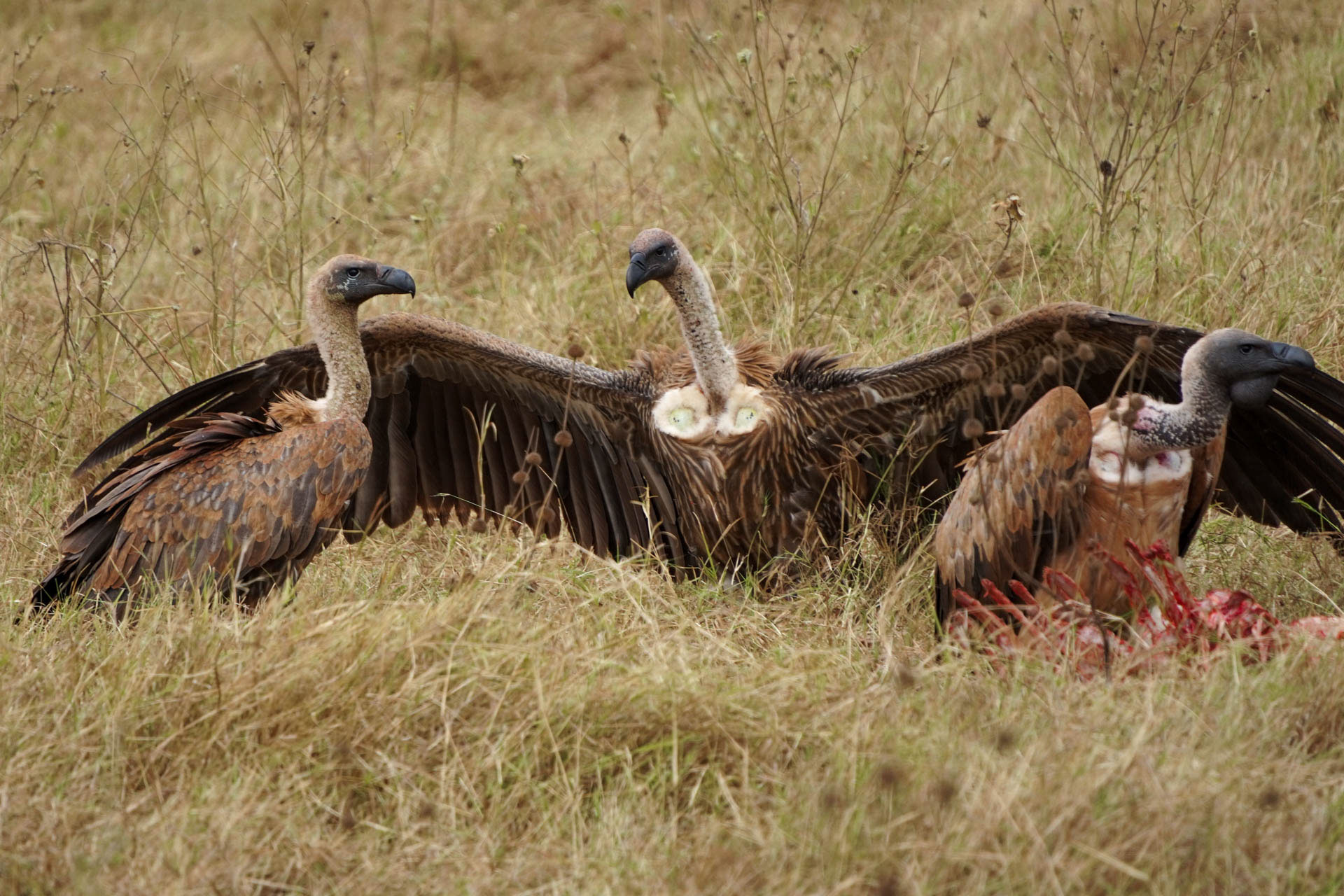
Though not the most attractive birds, vultures play a vital role in the ecosystem thanks to their unique digestive system. Extremely acidic stomachs — with a pH level as low as 1 — help them break down tough carcass tissues and neutralise dangerous pathogens such as bacteria and viruses present in decaying meat, thereby curbing the spread of infectious diseases. –Sammy Njoroge
The Migration action has subsided temporarily along the Mara River, with a few herds now found in the Triangle near the Tanzanian border. The mighty Mara River, a source of life and nourishment, currently appears calm. This river serves as a refuge for some, a hunting ground for others, and a death trap for many — which is clear from the smells emanating from it.
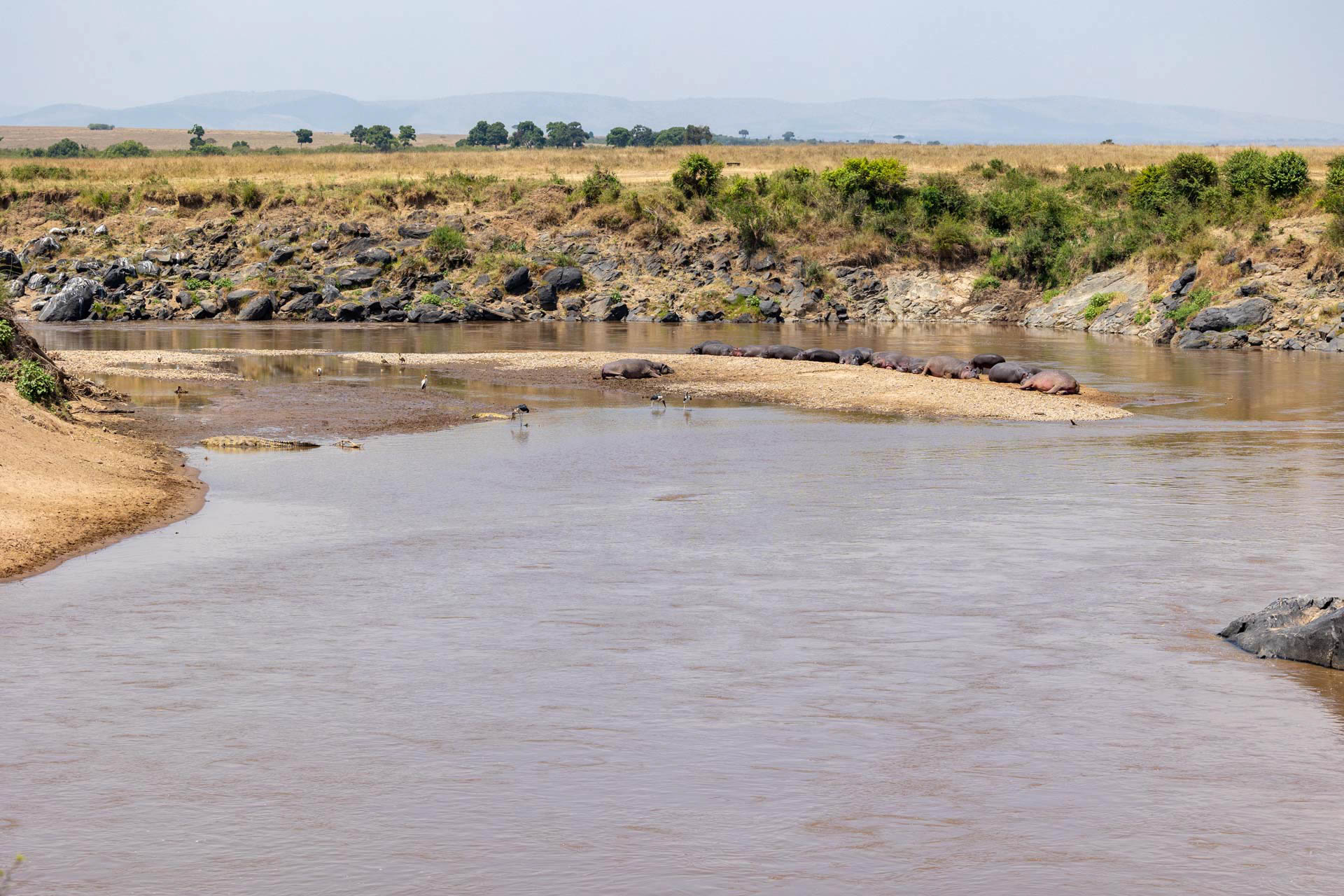
Reports from the Greater Mara indicate that larger herds are steadily making their way to the river, where they will eventually have to cross into the Triangle. One day, we decided to cross the Mara Bridge and venture towards Sand River. Here, we encountered a substantial group of wildebeest that had just crossed, slowly making their way into the Greater Mara — a promising sign that there is still much more action to come.
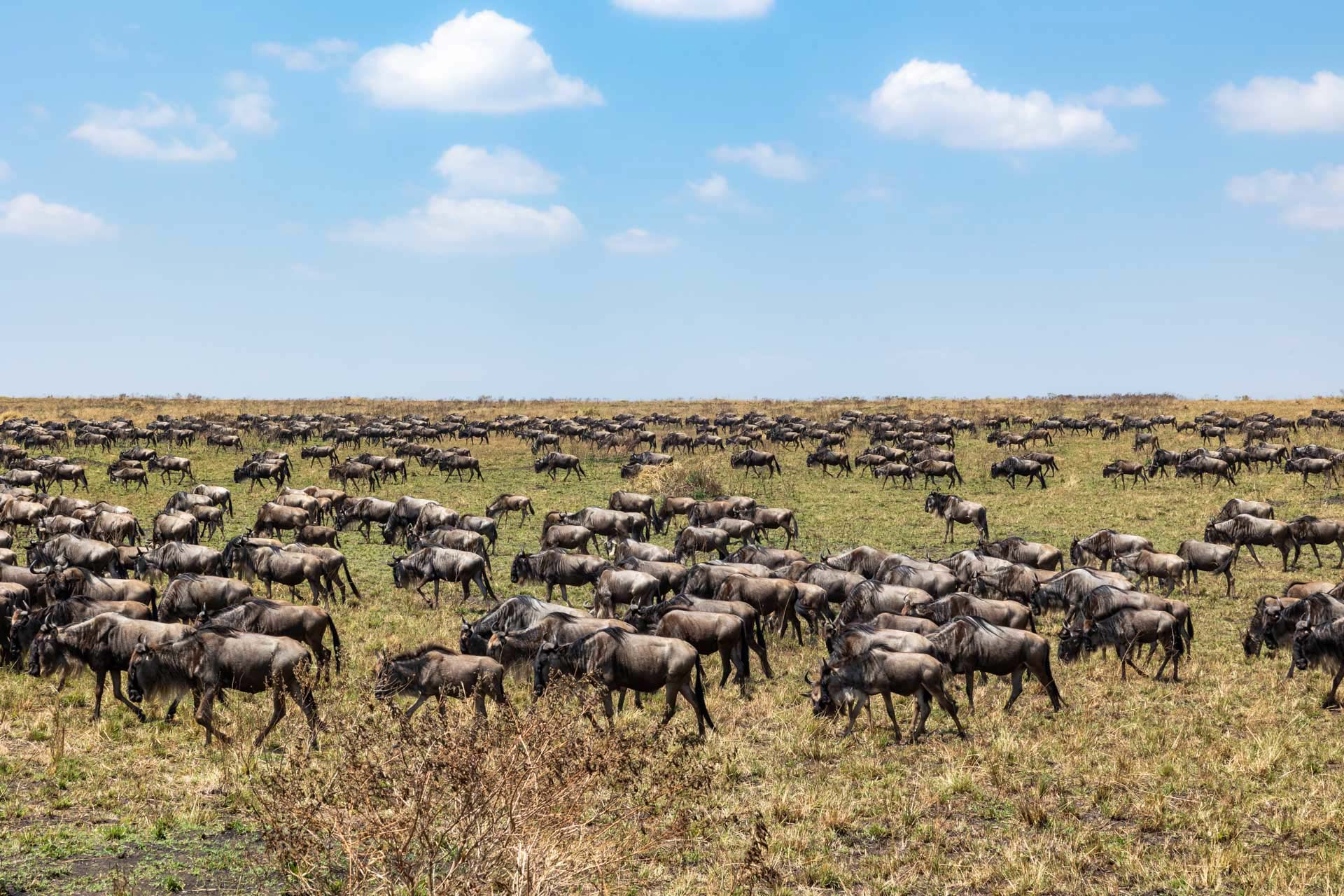
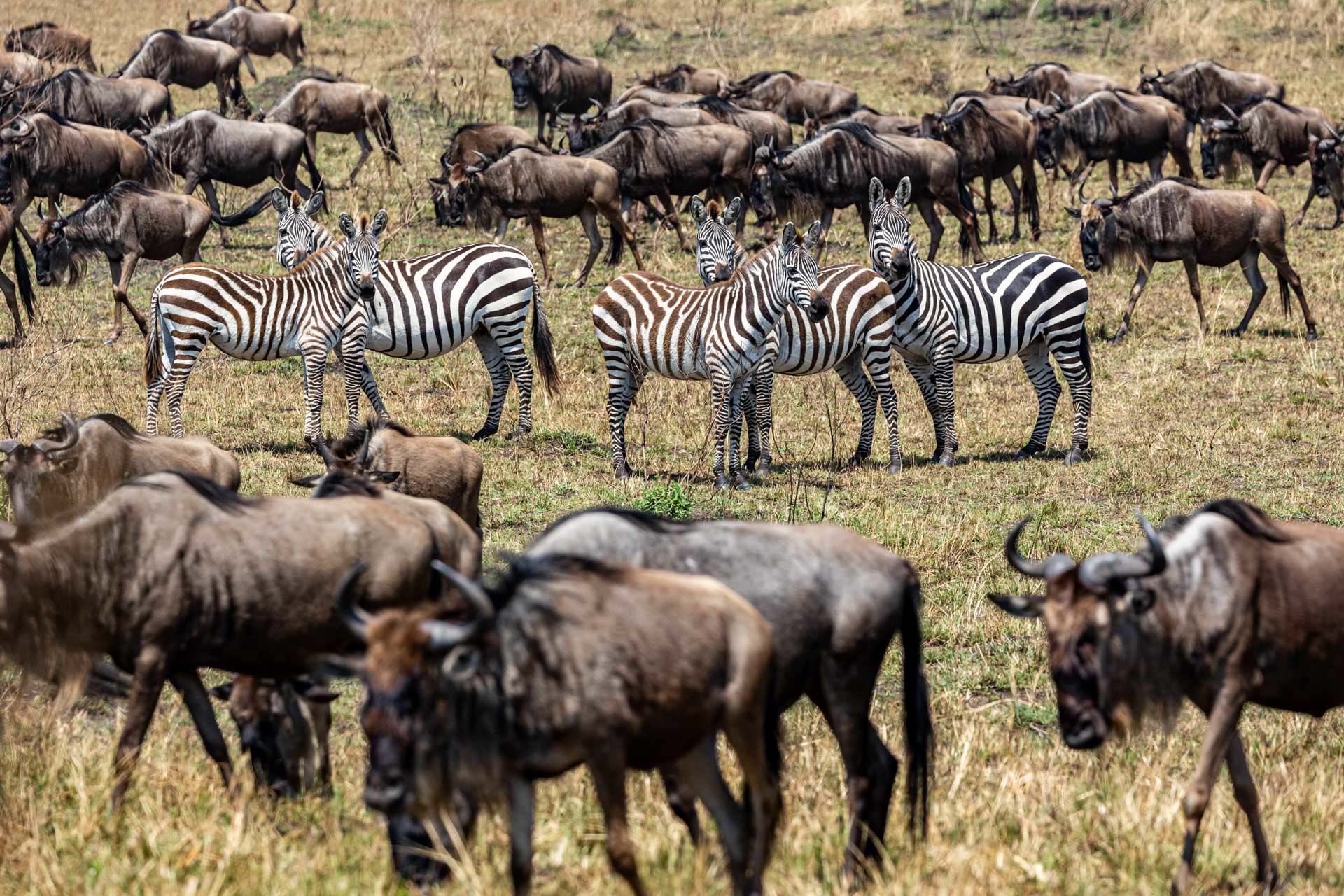
Big bull elephants often display dominance within their bull groups, inspiring awe in younger males recently pushed from their family units. Their large tusks are not just for show — they are used in fights with other males during mating periods and to establish their position within the herds, as well as tools for foraging and digging.
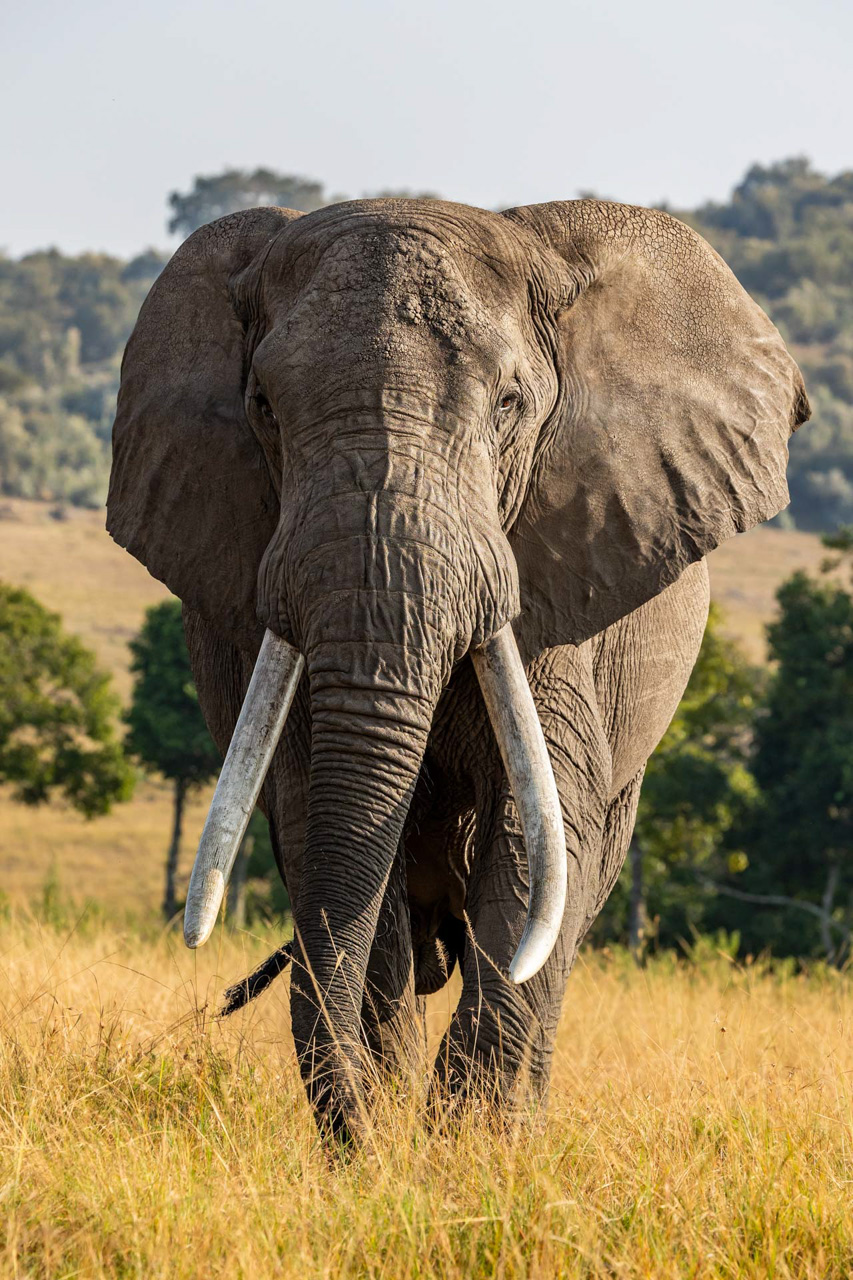
These elephants often command respect from humans as well. Their size and impressive tusks garner extra attention and protection in regions where they are studied or where human-elephant interactions are common.

The ability of wild animals to survive is a combination of physical resilience, behavioural adaptations and social support. These strategies enable them to endure and often recover from injuries that would be debilitating or fatal to humans. With a strict social structure, a female hyena's chances of survival are greater within high-ranking individuals. Luckily, losing a back leg is less detrimental to this hyena as its front legs are crucial for steering, balance and bearing a significant body weight.
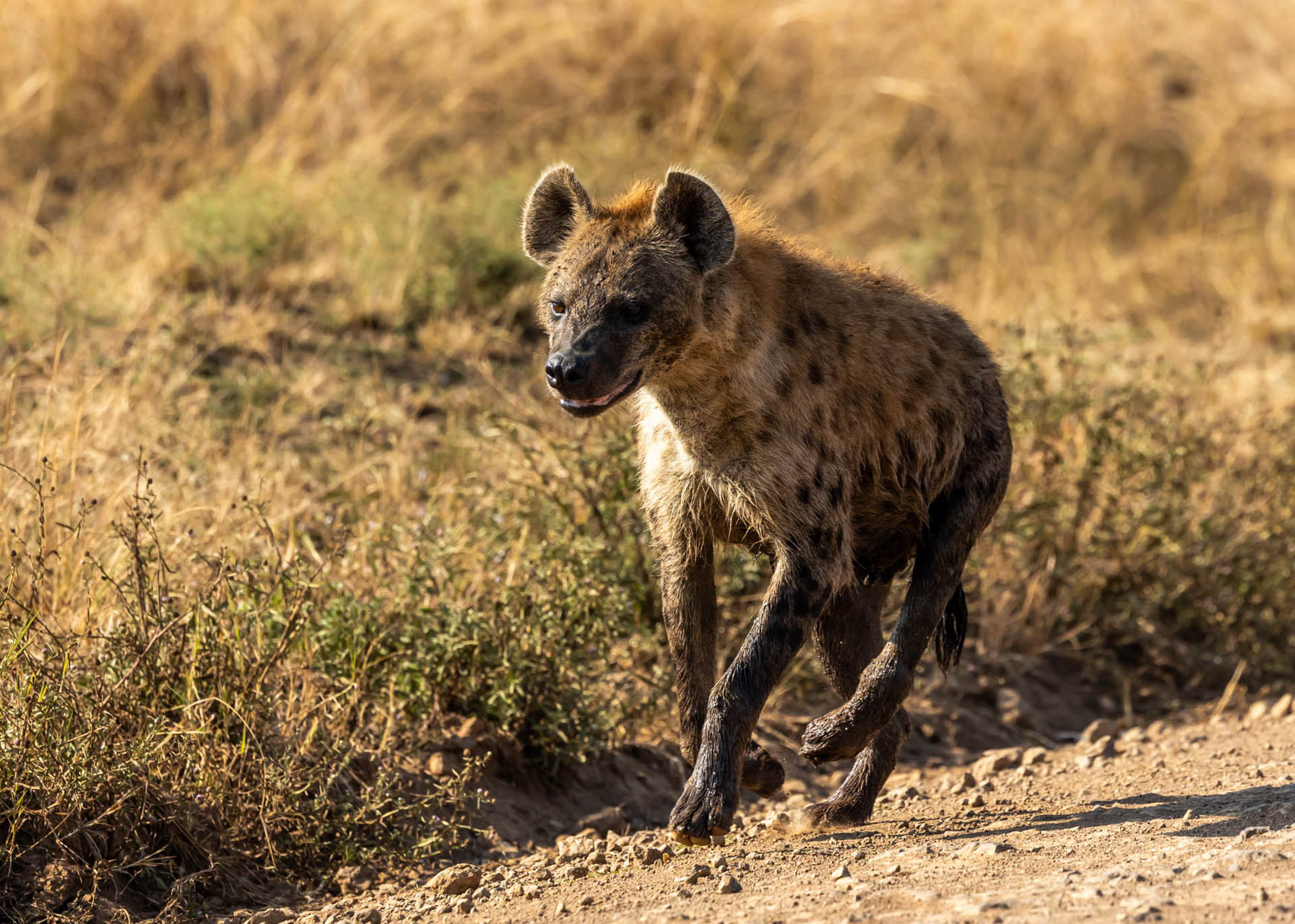
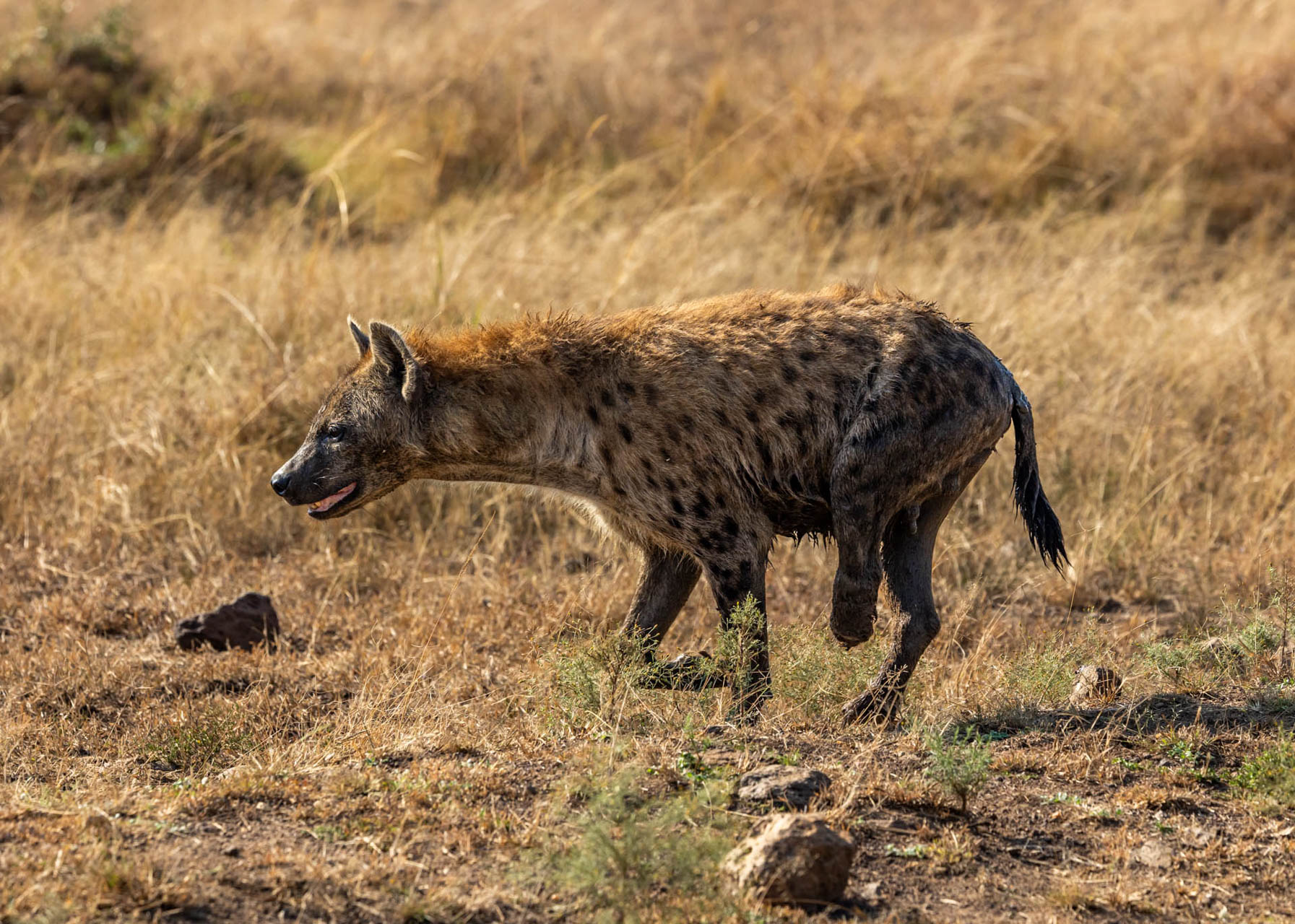
Though just a few hours old, this baby giraffe is already six feet tall. This is crucial as they must reach their mother’s milk and adapt quickly to their surroundings, with potential predators lurking for an easy meal. After a gestation of 15 months, the birth process involves an astounding six-foot drop to the ground, breaking the umbilical cord, and stimulating the baby to start breathing.
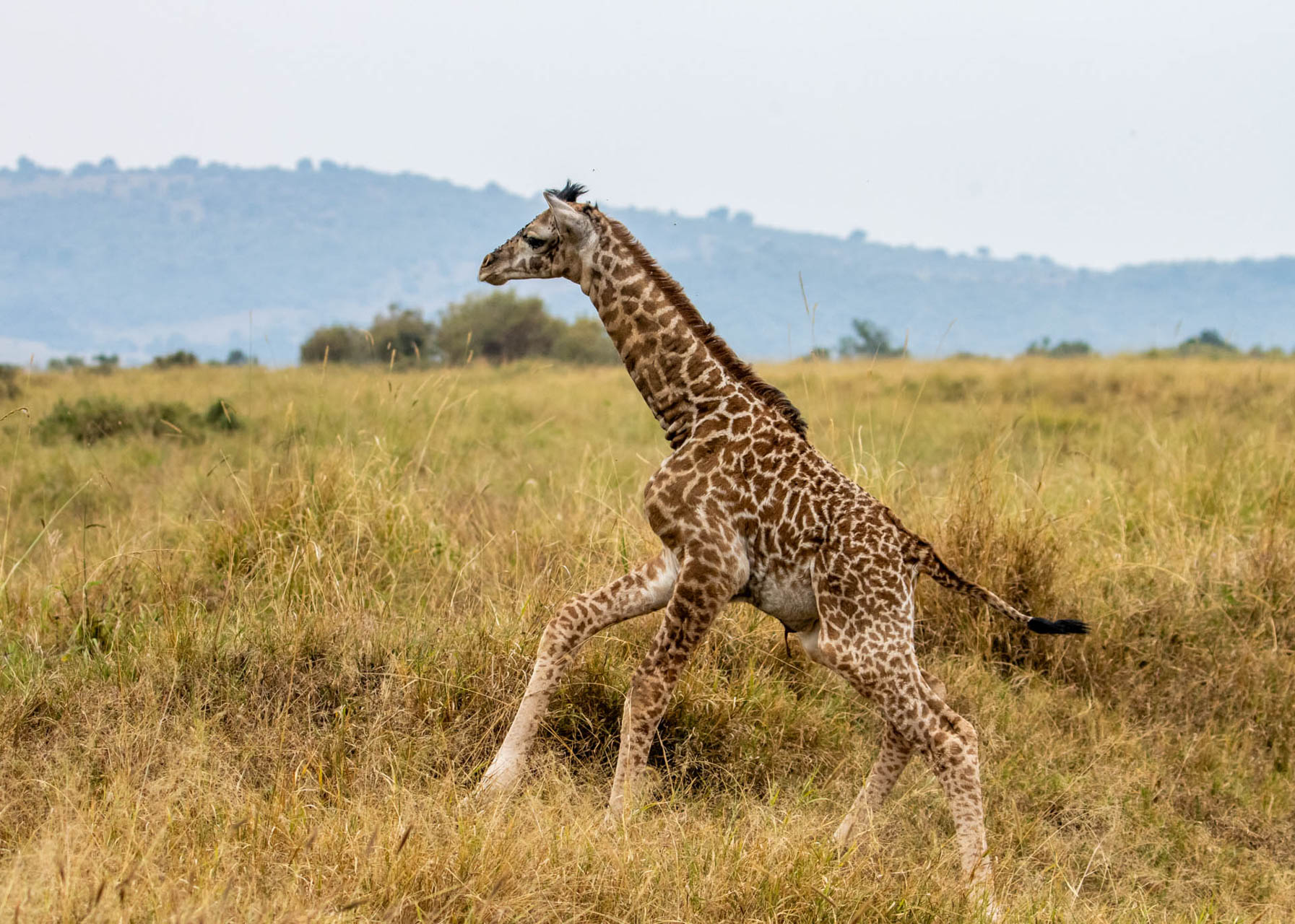
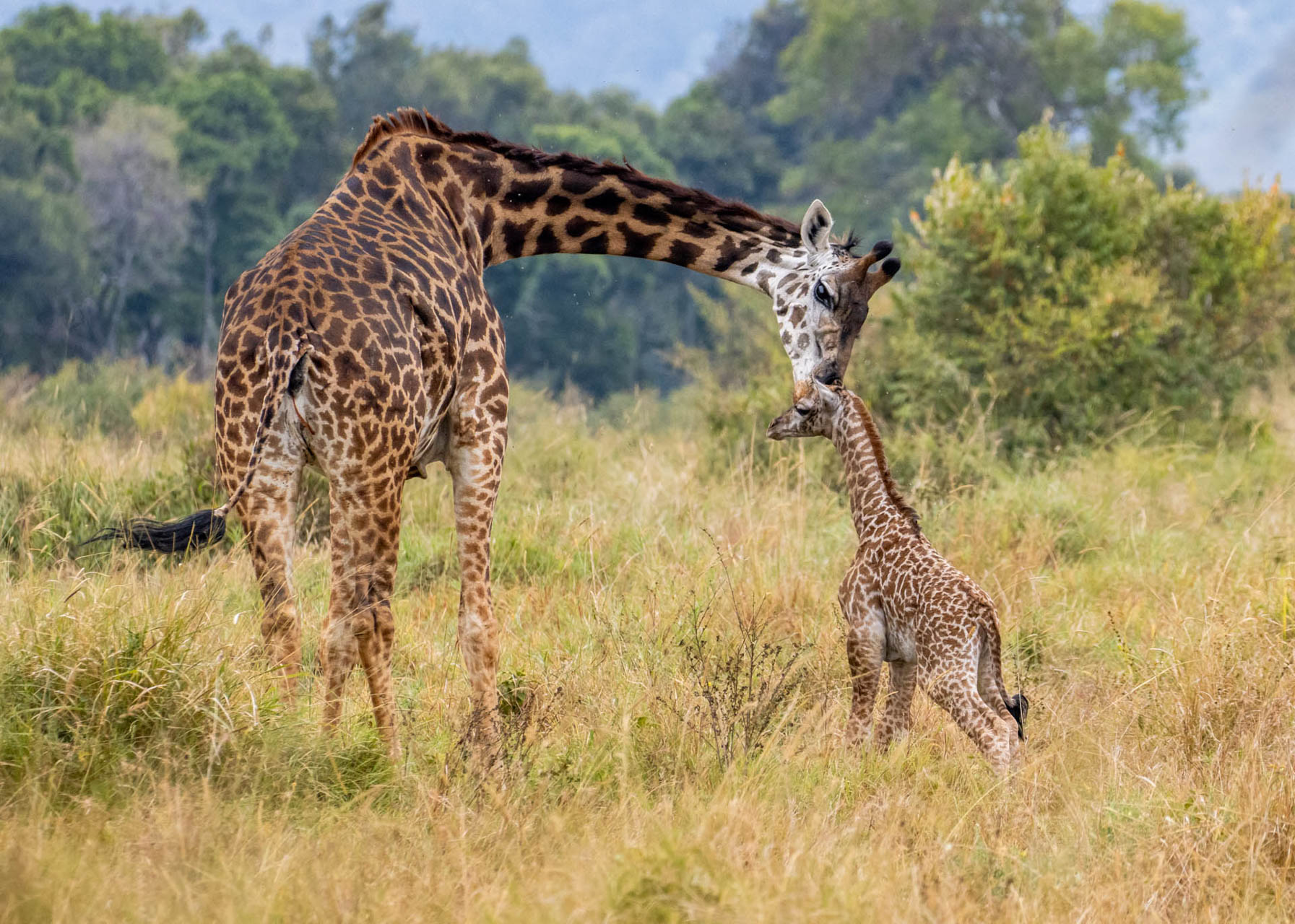
Exciting news this week — the Owino Pride has five new cubs! It’s been a while since we last featured them, given that the pride consists of just two females, who are rarely seen. These cubs, around 2-3 months old and sired by the Nyati males, were born to these two females who previously belonged to the Bila Shaka males. This is wonderful news for this small pride, and we’re hoping the cubs will grow to adulthood. –Robert Sayialel
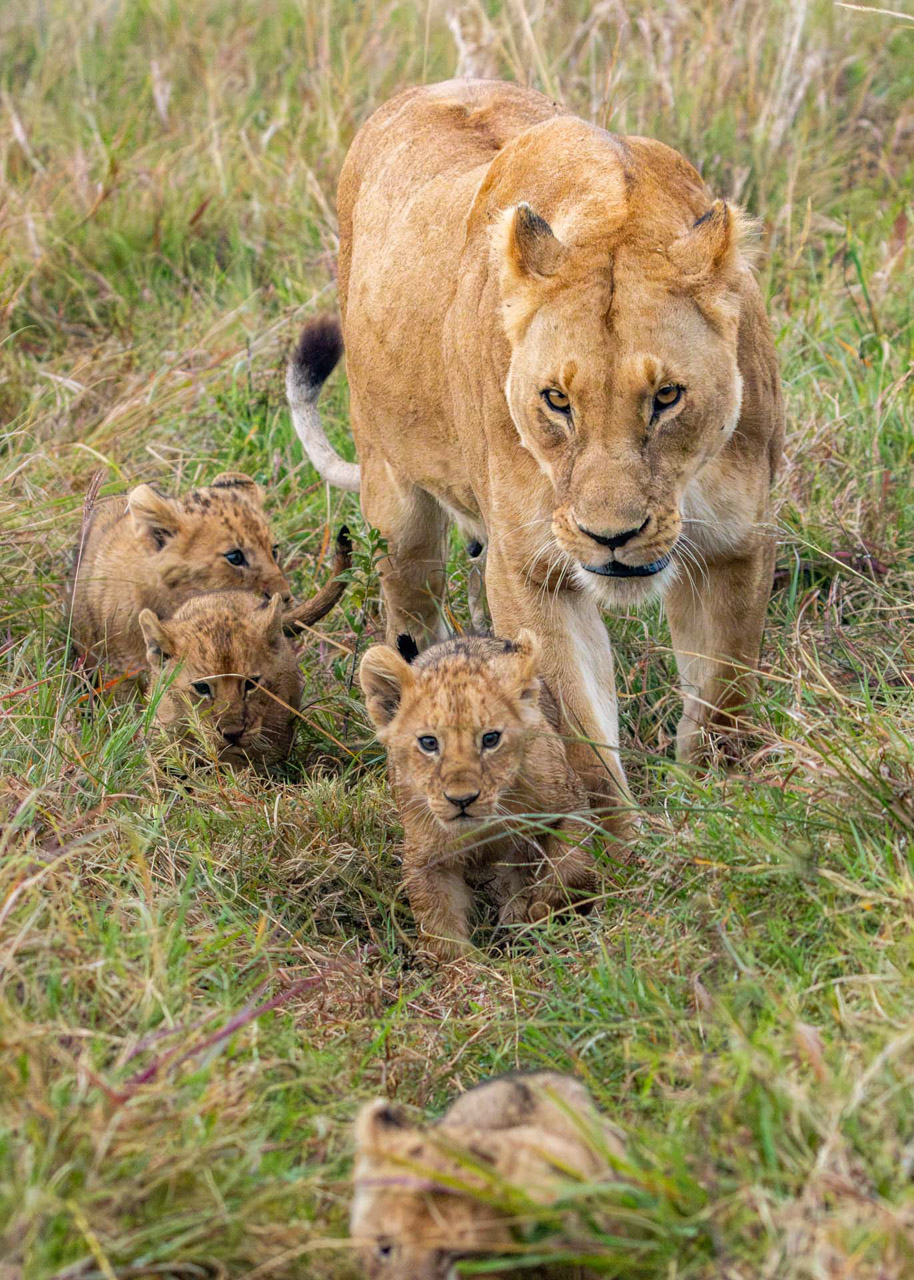
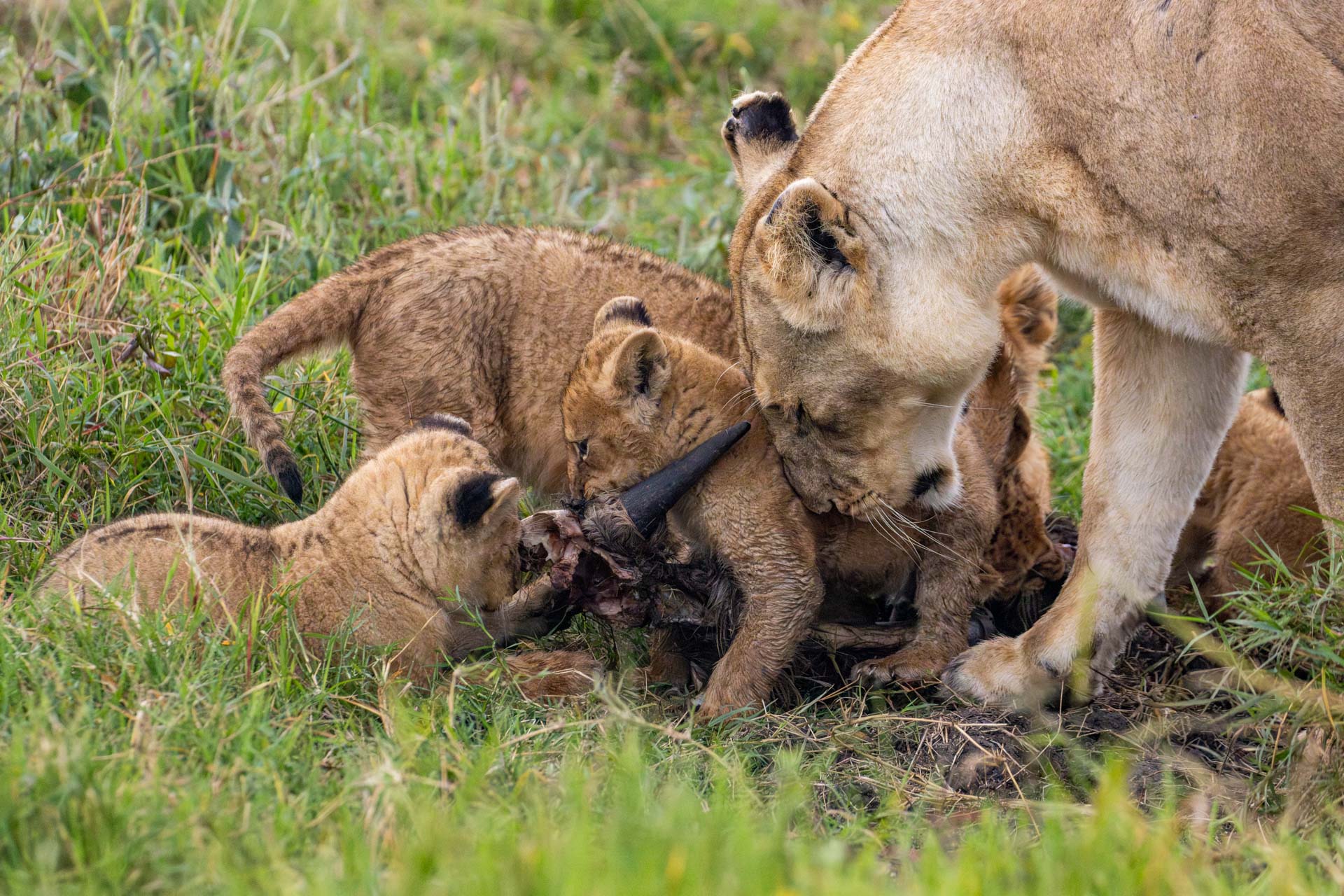
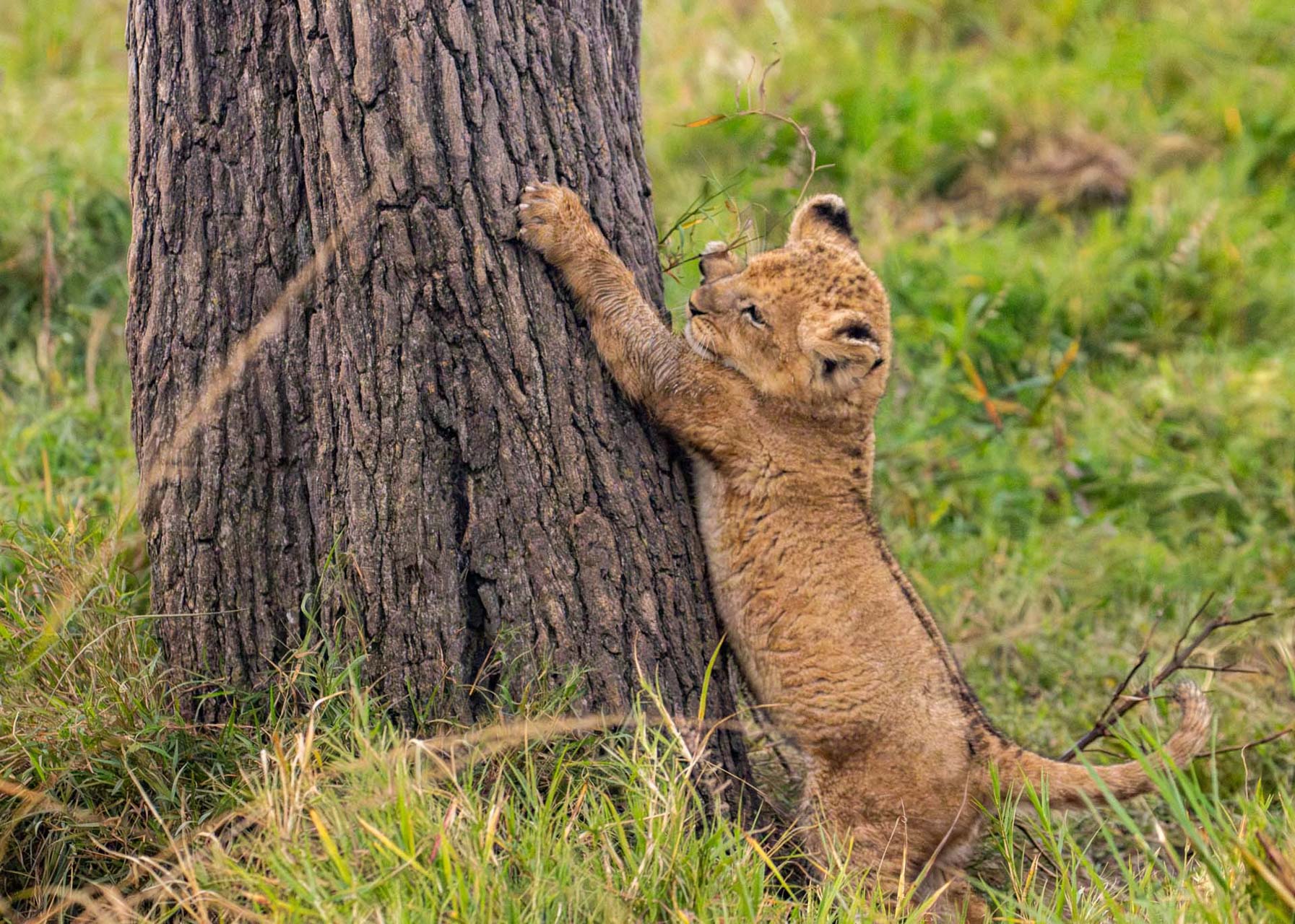
Filed under: This Week at Angama
Subscribe for Weekly Stories
Comments (0):
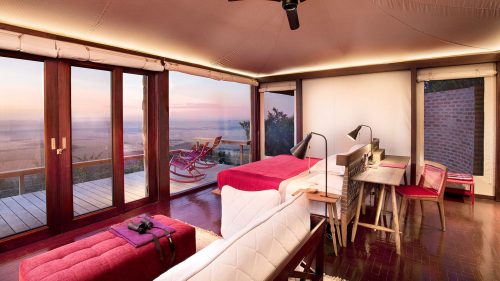
Tented Suites